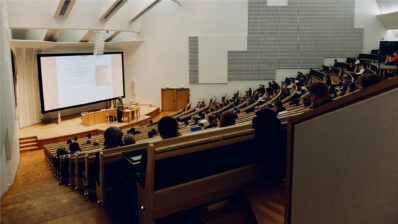When did human beings begin to try to explain things that happened to them and around them? In other words: when did human beings create their first story? Was it before or after the emergence of language? Òscar Vilarroya, the coordinator of the Neuroimaging of mental disorders research group at the Hospital del Mar Medical Research Institute (IMIM) and author of the essay “Somos lo que nos contamos“, confirms that “the minimum version of telling stories is a prelinguistic process”.
This minimum version is what, throughout the essay, Vilarroya calls a “primordial story“, that is to say, the story in its most basic form. It was not until the incorporation of language in our daily lives that we began to build more sophisticated stories.
Through real events, clinical cases and some curiosities, the researcher explains the mechanisms by which we can build any story, from the most basic story to a sophisticated one.
Vilarroya is very clear: “we are a narrative species and, instead of Homo sapiens, we should better call ourselves Homo narrator“.
“We are a narrative species; instead of Homo sapiens, we should better call ourselves Homo narrator”
Òscar Vilarroya
What if we had evolved in another direction, in which narrative ability was not present in our lives? The stories, in a life in society, have been an evolutionary advantage since they have let us cooperate with each other in a fluent way.
With the case of the Salem witches and the collective hysteria that was unleashed, the author wanted to represent, at the beginning of the essay, the extremes that human behavior can reach when guided by a false story.
In this line, Vilarroya brings to the table some thoughts: does the reality of the narrator match the reality we find outside? To what extent are stories true to reality? “Our experience of reality is more of a construction, rather than a representation, of our environment. Our experience of reality is so constructed that it can derail very easily and, if it doesn’t, it is because we have many security mechanisms to prevent it”, confirms the author of Somos lo que nos contamos.
“Our experience of reality is more of a construction, rather than a representation, of our environment.”
Finally, the researcher wanted to highlight the importance of the digital ecosystem in the dissemination of information; nowadays, any story from any user, true or not, can immediately reach any part of the world. Developing critical thinking, training digital literacy… are some of the tools Vilarroya suggests to readers to fight against the already well-known “fake news“.
 Interviewing the author
Interviewing the author
What motivated you to write a book about the narrative capacity of the human being?
Our narrative capacity is an adaptation that we have acquired to deal with some of the challenges of life in society. It is an adaptation that distinguishes us and that is essential to understand how our brain works. I thought it was a good tool to integrate current knowledge about the evolution fo the brain, social cognition and the importance of the story in some of the contemporary phenomena.
In the book you explain that, to date, there is much to discover in terms of the format by which we construct our thoughts. Do you think that human thought is formulated by verbal language or that thought is prior to language?
Indeed, although there are different hypotheses about what is the “language of thought”, if there is one, we still do not have enough data to rule out any of them. My impression is that we have to move away from the hypothesis of the brain as a digital computer and get closer to a less polished and more sloppy model. What I mean is that the brain is probably a set of sub-optimal and redundant systems and processes that have accumulated during evolution, and that are integrated according to our interests and current situation.
You explain that “fake news” and “narrative bubbles” will be an increasingly common phenomenon in modern societies, due, in part, to social networks. Don’t you think that in social networks we can also find the tools to fight against these phenomena?
Undoubtedly. Social networks can be, and probably will be, very useful to fight against “fake news” and “narrative bubbles”, but there has to be someone behind it who wants to carry out this work.







